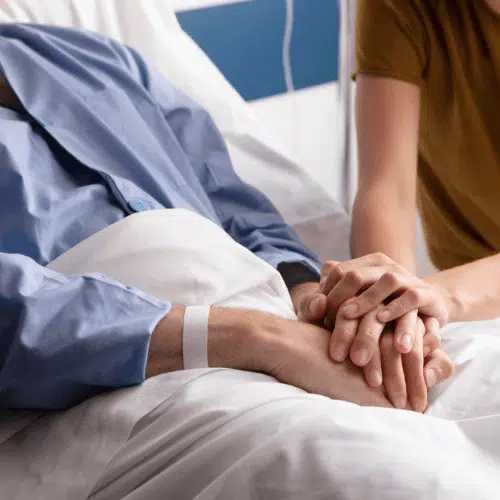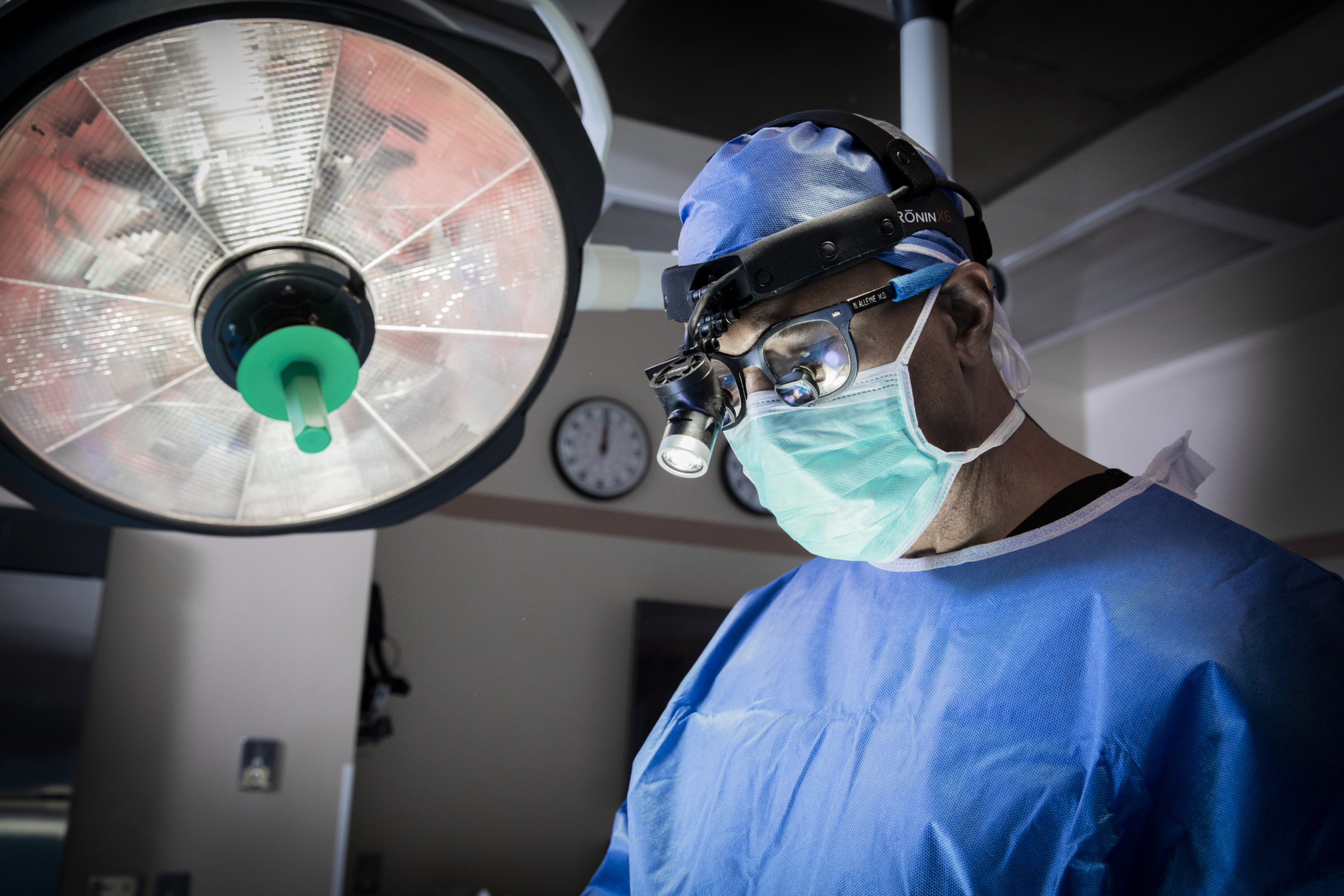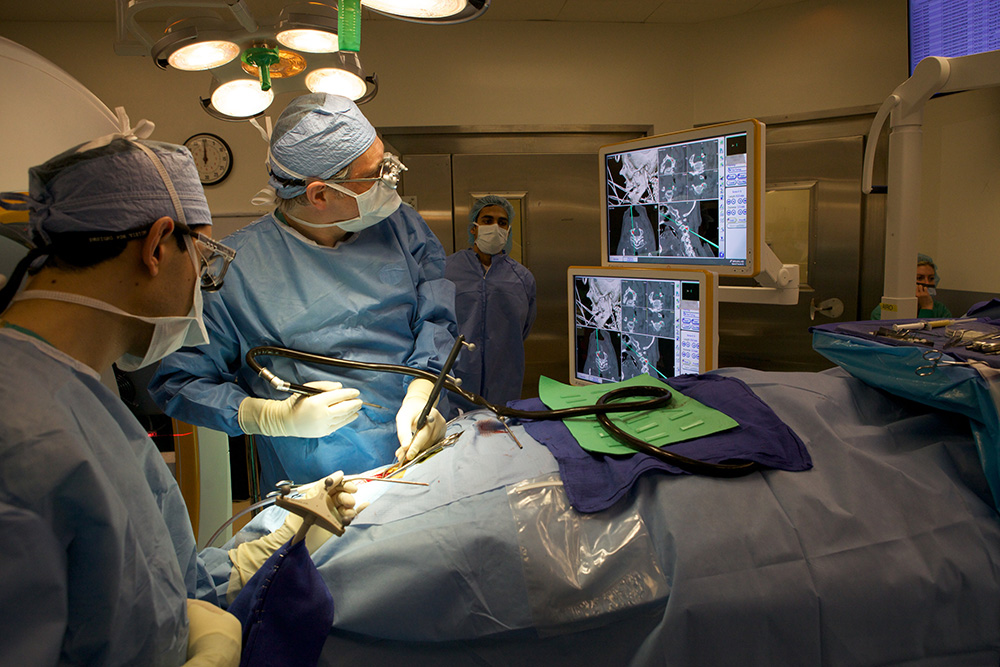Just how to Get ready for Visits to the Best Spine Surgeons in St Louis MO
Wiki Article
What Back Issues Usually Lead to Surgical Treatments for Relief?
Spinal column problems that call for medical treatment commonly emerge when conservative treatment options fail to offer sufficient relief from consistent pain and practical problems. Problems such as herniated discs, spine constriction, and degenerative disc illness regularly lead to medical procedures intended at reducing signs and recovering movement.
Herniated Discs
Herniated discs are a common spine condition that frequently brings about surgical treatment when conservative therapies stop working. This condition occurs when the soft internal gel of a spinal disc protrudes with a tear in the harder external layer, potentially compressing nearby nerves. Signs typically include localized pain, radiating discomfort in the arm or legs, and neurological deficits such as prickling or weakness.
Surgical treatment intends to alleviate pain and bring back feature by getting rid of the herniated portion of the disc or stabilizing the impacted spine section. While several patients experience significant improvement complying with surgical procedure, it is critical to weigh the benefits and risks in assessment with a qualified spinal column expert. Inevitably, prompt treatment is important to enhance and protect against additional problems high quality of life for people dealing with this devastating condition.
Spinal Stenosis
Experiencing back constriction can dramatically influence an individual's movement and top quality of life. This condition occurs when the spinal canal tightens, positioning stress on the spine and nerves. Typically seen in the lumbar (lower back) and cervical (neck) areas, back stenosis typically results from degenerative changes associated with aging, such as joint inflammation, disc herniation, or enlarging of ligaments.Symptoms of back constriction can vary, but they generally consist of discomfort, tingling, tingling, and weak point in the extremities. These signs may worsen with task or extended standing and frequently boost with remainder. In severe instances, people might experience problems with balance and control, causing a heightened threat of falls.
When conservative therapies, such as physical therapy, drugs, and way of life modifications, stop working to minimize symptoms, medical intervention might be considered. Treatments like laminectomy or spine blend objective to unwind the afflicted nerves and stabilize the back. Early diagnosis and therapy are essential in taking care of spine stenosis effectively and protecting movement, inevitably improving the person's overall lifestyle.
Spondylolisthesis
Spondylolisthesis takes place when one vertebra slips forward over the one below it, potentially bring about spinal instability and nerve compression. This condition can occur from numerous aspects, consisting of congenital flaws, degenerative adjustments, trauma, or repeated stress and anxiety injuries. Symptoms usually include lower back discomfort, rigidity, and radiating pain in the legs, which can substantially influence daily activities and general lifestyle.Medical diagnosis usually entails an extensive clinical examination, imaging studies such as click here for info X-rays or MRI, and assessment of neurological function. The level of slippage is identified into grades, with greater qualities indicating extra severe displacement and a greater possibility of surgical intervention.

Early diagnosis and suitable management are essential in enhancing and avoiding further difficulties individual results. As spondylolisthesis can lead to persistent pain and disability, prompt intervention is important for recovering spine health.
Degenerative Disc Condition
Degenerative Disc Illness (DDD) is a condition identified by the gradual deterioration of the intervertebral discs, which function as important shock absorbers in between the vertebrae of the spinal column. As these discs lose hydration and flexibility over time, they come to be less reliable at supporting the vertebrae, causing enhanced rubbing and anxiety on the spinal structures.People with DDD commonly experience symptoms such as persistent pain in the back, rigidity, and decreased flexibility (best spine surgeons in st louis mo). The condition can also lead to nerve compression if the deteriorated discs lump or herniate, leading to radicular discomfort, weak point, or pins and needles in the arm or legs
Therapy alternatives array from conservative steps, consisting of physical treatment and pain administration, to more invasive procedures when conservative measures fall short. Surgical treatments, such as back blend or man-made click for source disc substitute, may be indicated for clients with significant discomfort and useful problems.
Spine Growths
Spinal lumps, which can be malignant or benign, stand for one more considerable source of back conditions that might require surgical treatment (best spine surgeons in st louis mo). These growths can originate within the back (main tumors) or metastasize from various other parts of the body (secondary lumps) Their visibility can result internet in various signs, including local pain, neurological shortages, and alterations in wheelchair
Surgical treatment for spine tumors usually aims to relieve signs by getting rid of the tumor, maintaining the spine, and resolving any type of compressive results on the spine cable or nerves. Indications for surgical procedure generally consist of significant pain not responsive to conservative treatments, or neurological problems arising from the tumor's development.

It is important for people presenting with symptoms suggestive of spine growths to undertake thorough diagnostic assessments, including imaging research studies and biopsies, to figure out the ideal strategy (best spine surgeons in st louis mo). Early discovery and treatment can significantly improve client outcomes and lifestyle
Final Thought
In summary, different spinal column problems, including herniated discs, spine stenosis, spondylolisthesis, degenerative disc disease, and spinal tumors, typically require medical treatment when traditional therapies fall short to supply alleviation. These conditions result in significant pain and useful problems, motivating the factor to consider of procedures such as discectomy, spinal fusion, and laminectomy. Inevitably, medical choices objective to reduce discomfort, boost flexibility, and recover lifestyle for individuals affected by these debilitating back conditions.Conditions such as herniated discs, spinal constriction, and degenerative disc illness frequently lead to surgical treatments aimed at alleviating symptoms and recovering mobility.Herniated discs are a typical spine condition that often leads to medical treatment when traditional treatments stop working. Surgical interventions, such as spine combination or synthetic disc substitute, may be shown for patients with significant pain and useful disability.Spine lumps, which can be benign or malignant, represent another significant cause of spine conditions that may demand medical intervention.In summary, various spinal column issues, consisting of herniated discs, back stenosis, spondylolisthesis, degenerative disc condition, and spinal lumps, typically necessitate medical treatment when conservative therapies fall short to offer relief.
Report this wiki page